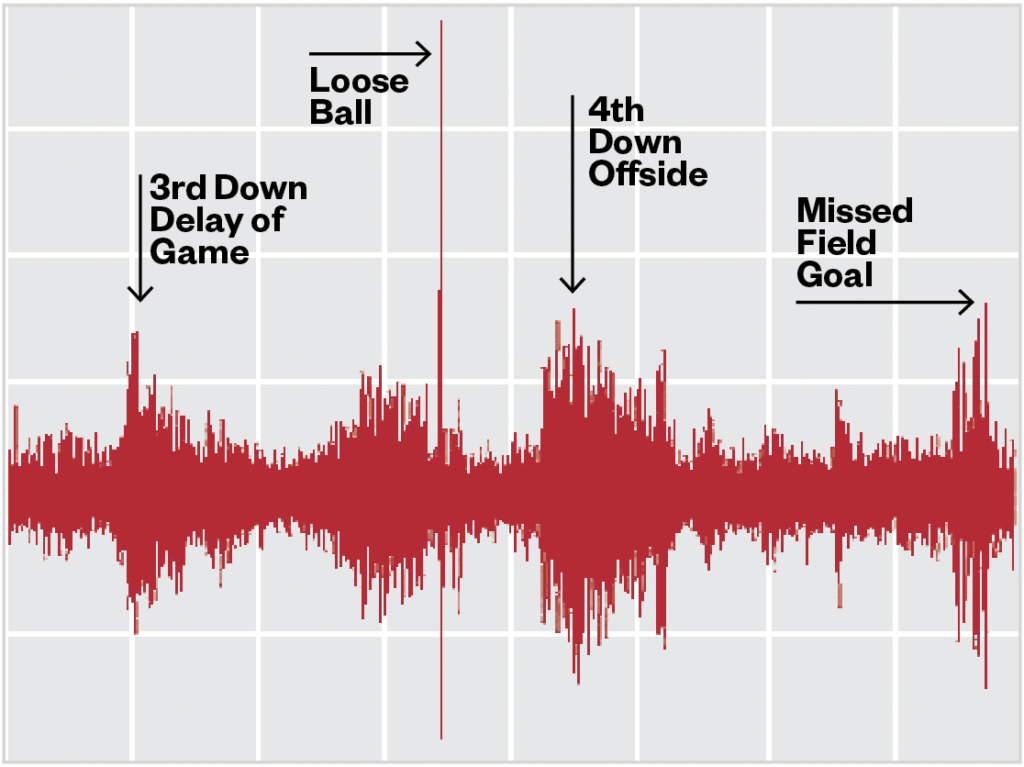 The eardrum-shattering third-down jump at Rice-Eccles Stadium isn’t just causing false-starts and pumping up our players—it’s actually moving the earth. Last season, University of Utah Seismograph Stations (UUSS) installed what it calls UteQuake, a set of tools to monitor amplitude signals at the stadium. You may have seen the real-time updates on social media during the games.
The eardrum-shattering third-down jump at Rice-Eccles Stadium isn’t just causing false-starts and pumping up our players—it’s actually moving the earth. Last season, University of Utah Seismograph Stations (UUSS) installed what it calls UteQuake, a set of tools to monitor amplitude signals at the stadium. You may have seen the real-time updates on social media during the games.
“Although a seismometer’s primary role is to record earthquakes, these very sensitive instruments will detect any ground shaking, regardless of the source, including from rowdy Utes fans in Rice-Eccles Stadium,” UUSS posted on the UteQuake website.
The idea is to help pump up game-day excitement, while also promoting the Seismograph Stations’ vital public safety mission to reduce the risk from earthquakes in Utah through research, education, and public service, says Jamie Farrell MS’07 PhD’14, a research associate professor of geology and geophysics. The UUSS operates a regional network of 200 seismographs stretching from the Grand Canyon in Arizona to Yellowstone National Park in Montana.
Tested during the Utes’ season opener against the Florida Gators—when record attendance exceeded 53,000—the experiment proved a roaring success, says Farrell. However, UUSS scientists caution against using the seismic data to draw magnitude equivalences, the standard measure of earthquakes. “UteQuakes are not real earthquakes, they are measurements of ground motion caused by fans in the stadium,” notes Farrell. To avoid confusion, Farrell’s team refrained from sharing magnitude equivalence.
“It turns out it’s hard to calculate a magnitude for something that isn’t an earthquake,” adds Farrell. “The best we can do now is relative amplitudes from game to game.” The UUSS team also compared seismic readings taken during games at Rice-Eccles with those from a permanent seismograph station located .6 miles north of the stadium, which has been measuring actual earthquakes for years, including the magnitude 5.7 Magna quake in 2020.



Comments
Comments are moderated, so there may be a slight delay. Those that are off-topic or deemed inappropriate may not be posted. Your email address will not be published. Required fields are marked with an asterisk (*).